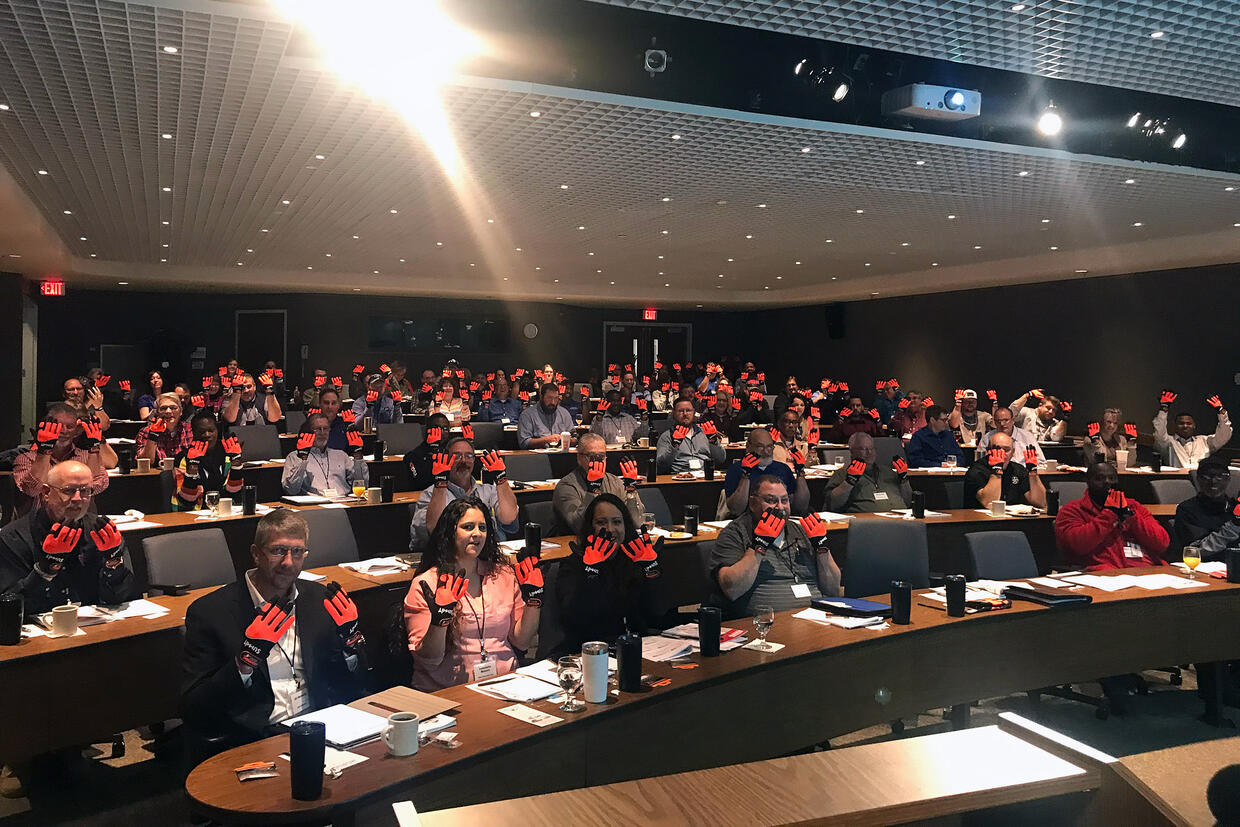Do Your Drivers Work for Other Compensation?
A driver with other compensated work outside your employment could impact your company’s liability exposure and compliance!
Motor carriers can find themselves liable when a commercial motor vehicle driver has another part-time job unknown to the motor carrier.
Only when there is an accident or an on-site compliance review does the motor carrier become aware of the situation and find that the driver has not complied with the hours of service regulations. These situations place the motor carrier in grave liability as the outside part-time work is compensated.
How does the motor carrier protect itself from this exposure? Consider this. Have all your drivers sign a statement upon hire indicating that they do not currently have any other employment for which they are being compensated? Also include in the statement that if they incur compensation for any work outside of their employment with your company, they will immediately inform their supervisor and will be required to document the hours on their hours of service documentation, either a grid log or time record as “On Duty” time. Have the driver sign and date the statement and maintain it in the driver’s qualification file. Click on the following link for an example of the Driver’s Certification of other compensated work statements.
http://www.idealease.com/safetycompliance/drivercertification.pdf
Do I need a CDL license to operate that truck?
Answer: The regulations that address this question are found in FMCSA CFR 383.3.
§383.3 Applicability. (a) The rules in this part apply to every person who operates a commercial motor vehicle (CMV) in interstate, foreign, or intrastate commerce, to all employers of such persons, and all States. The definition of a commercial motor vehicle for this regulation is as follows:
A commercial motor vehicle (CMV) is a motor vehicle or combination of motor vehicles used in commerce to transport passengers or property if the motor vehicle:
- Has a gross combination weight rating of 11,794 kilograms or more (26,001 pounds or more) inclusive of a towed unit(s) with a gross vehicle weight rating of more than 4,536 kilograms (10,000 pounds); or
- Has a gross vehicle weight rating of 11,794 or more kilograms (26,001 pounds or more) or
- It is designed to transport 16 or more passengers, including the driver or
- As defined in this section, it is of any size and is used to transport hazardous materials.
The following are questions that frequently are asked about the CDL and have been addressed by the FMCSA:
- May a person operate a CMV wholly on private property, not open to public travel, without a CDL? Answer: YES
- Do mechanics, salespeople, shop help, and occasional drivers need a CDL if they are only test-driving a CMV? Answer: YES, if the CMV is operated on a public street, road, or highway.
- I have moved; how long do I have to get my CDL license reissued by my new state of residence? Answer: 30 Days.
Do the regulations require a person driving an empty school bus for a test drive or transport to have a CDL? Answer: Yes, a CDL would be required if the bus is designed to transport 16 or more passengers and the bus has an MGVWR exceeding 26,000 lbs. However, a passenger endorsement would not be required since the unit is empty.
A driver operates a tractor of exactly 26,000 pounds GVWR, towing a trailer of exactly 10,000 pounds GVWR for a GCWR of 36,000 pounds. HM and passengers are not involved. Is it a CMV, and does the driver need a CDL? Answer: No to both questions. Although the vehicle has a GCWR of 36,000 pounds, it is not a CMV under any part of the definition of that term in §383.5, and a CDL is not federally required.
California Electronic Logging Device (ELD) Mandate is effective on January 1, 2024, for California INTRAstate Motor Carriers.
California has been at the forefront of adopting stringent regulations to improve road safety and compliance in the trucking industry. While the federal government implemented the ELD mandate for interstate trucking companies in 2017, California codified the mandate in August 2018, with enforcement beginning in October of that year. Now, California has extended this requirement to intrastate operations, with full enforcement set to start in 2024.
Why is California making this change?
California is the last state to adopt an ELD mandate for its intrastate commercial drivers.
According to the California Highway Patrol’s (CHP) Notice of Proposed Regulation, “The actions will enhance the safe operation of motor vehicles and increase the competitiveness of California carriers by eliminating or modifying, to the extent possible, regulations which conflict with updated federal regulations, reducing negative impacts on businesses. This rulemaking will also allow the CHP to remain consistent with Federal Motor Carrier Safety Regulations (FMCSR) adopted by the United States Department of Transportation and addresses inconsistencies and incompatibilities between state and federal regulations.”
How are the California and FMCSA ELD mandates different?
For the most part, the California ELD regulations align with the FMCSA’s ELD mandate. However, there are differences that carriers and drivers traveling through California need to know to avoid violations.
FMCSA ELD mandate | California ELD mandate |
Exempts drivers from needing to use an ELD if their movements are within a 150 air-mile radius of the base of their operations. Maximum number of hours worked is 14 hours. | Uses a 100 air-mile radius and a 12-hour limit. Maximum duty period is 12 hours. |
Mandatory 30-minute rest break after 8 hours of driving. Non-exempt drivers may only drive 11 of the 14 hours. | No 30-minute rest break requirement. Non-exempt drivers may drive 12 hours of the 16 hours on-duty for trucks. 15 hours for bus operators. |
May extend duty period up to 2 hours. (16-hour exemption. Can be invoked once in each 34-hour reset cycle.) | May extend driving period up to 2 hours, but not the duty period. |
The exceptions to the California ELD mandate are the same as the FMCSA’s federal mandate and include:
Drivers operating under short-haul operations aren’t required to keep a record of duty status (RODS). Drivers can use time records in place of ELD.
Here are the exemptions:
- Drivers must keep RODS at most eight days within any 30-day period.
- Drivers conducting a drive-away-tow-away operation (an operation in which an empty or unladen motor vehicle with one or more sets of wheels on the surface of the roadway is being transported) if the car being driven is the commodity being delivered, or if the vehicle being transported is a motorhome or recreational vehicle trailer.
- Drivers of vehicles manufactured before the model year 2000.
- Transporters of livestock and insects are not required to have an ELD. AG Haulers are not required to use an ELD while operating within the 150-air-mile radius AG exemption zone.
What is the penalty for ELD violations under the California ELD mandate?
Vehicles not in compliance with the ELD mandate in California may be placed out-of-service for 10 hours for failing to have a record of duty status.
If you have multiple state operations and already have an ELD provider, check with them to ensure they have an ELD that will comply with California’s mandate, effective January 1, 2024.

Fire Prevention Week - October 8–14:
- Review fire prevention and reaction with drivers.
- Inspect fire extinguishers during daily vehicle checks.
- Ensure fire extinguishers are properly charged and not leaking.
- Driver actions during a fire are crucial for safety.

2023 Idealease/NPTC Safety Seminars:
Idealease, in partnership with the National Private Truck Council (NPTC), is pleased to announce the continuation of safety seminars in 2023. These one-day seminars will specifically concentrate on the wealth of data accessible from contemporary trucks, encompassing safety, fundamental safety measures, compliance, regulatory shifts, and CSA (Compliance, Safety, and Accountability). These invaluable seminars are open to all Idealease clients, potential customers, and NPTC members, and there is no registration fee.
Our seminars cater to both novice and seasoned transportation professionals, providing essential insights. While registration is currently available for seminars with confirmed venues, if registration for your preferred location is unavailable, please revisit the link periodically, as additional registration opportunities will be added as venues are secured. This bulletin will be routinely updated with the latest information. To secure your spot for an upcoming 2023 seminar, please visit the following link: Safety Seminar Registration.
Fall Seminars (Sept-Oct):
- 10/19/23 - Green Bay, WI
- 10/11/23 - Birmingham, AL
- 10/12/23 - Atlanta, GA
- 10/17/23 - Columbia, SC
- 10/17/23 - Batesville, IN
- 10/26/23 - Nashville, TN
*The Idealease Safety Bulletin is provided for Idealease locations and their customers and is not to be construed as a complete or exhaustive source of compliance or safety information. The Idealease Safety Bulletin is advisory in nature and does not warrant, guarantee, or otherwise certify compliance with laws, regulations, requirements, or guidelines of any local, state, or Federal agency and/or governing body, or industry standard.
